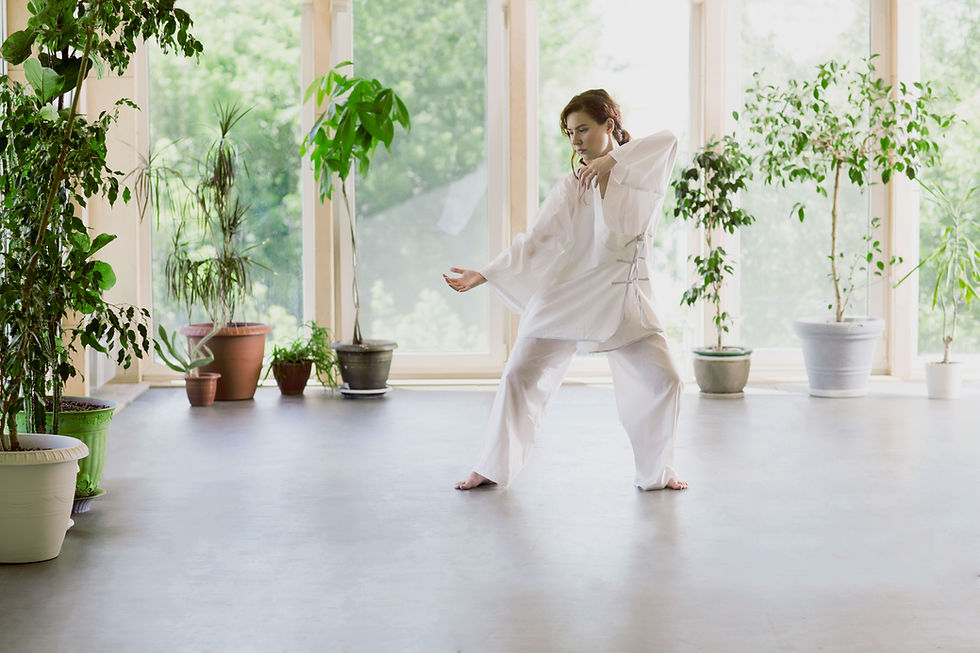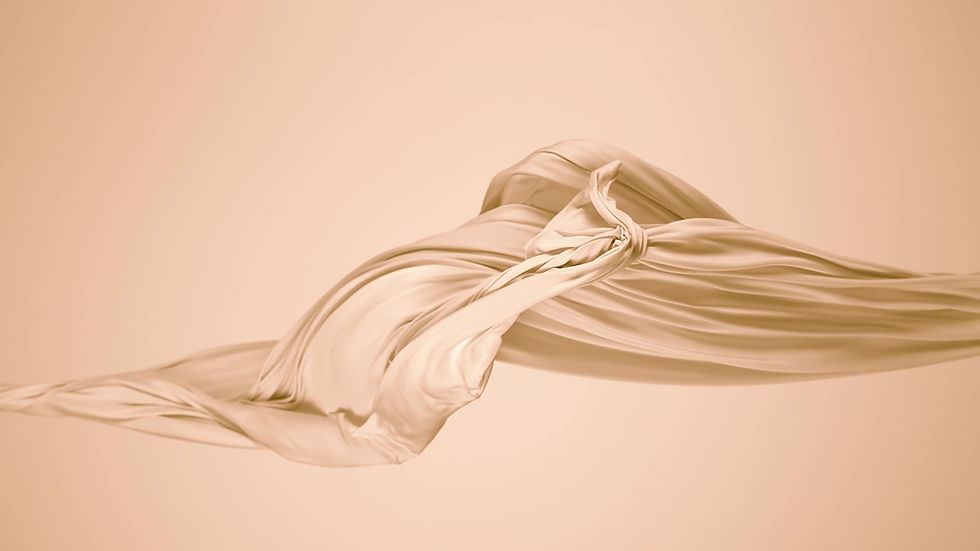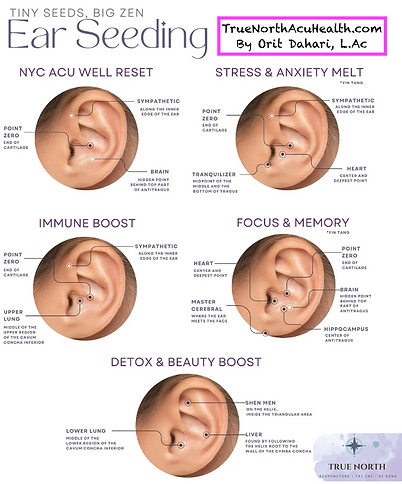Align with Your True North of Wholeness

Acupuncture
Acupuncture is an essential part of East Asian Medicine in which very fine, single-use, sterile needles are inserted into specific acu-points located on the body. It is used to treat various physical, mental, and emotional conditions.
How it works:
Western Perspective: New studies are coming out all the time that reflect fascinating ways acupuncture impacts our bodies and minds. What research has shown is that acupuncture has an effect on every system of the body. Its therapeutic effect stems mainly from its ability to relieve pain, reduce inflammation, restore homeostasis, promote circulation, facilitate the release of endorphins and other natural pain killers, and calm the sympathetic nervous system, our bodies natural stress response. Nearly all diseases involve some degree of imbalance of these mechanisms which is why acupuncture is considered a natural internal medicine.
Eastern Perspective: In Traditional Chinese Medicine (TCM), there are channels of energy, or “qi,” that run through the body. The body needs access to this energy for proper function and vitality. However, these channels can become blocked due to illness, injury, or emotional stress. By stimulating points along the channel through acupuncture, previously blocked energy can flow freely again to all the systems of the body, thus restoring balance and health.

Tai Chi
Hailed by Harvard Medical School as “Medication in Motion,” Tai Chi and Qi Gong are valued as preventative practices for many health problems, including joint pain, muscle tension, anxiety, insomnia and more.
Every class begins with a warm up, followed by a walking practice and simple exercises designed to promote relaxed breathing, focused mind and a restful being. While Qi Gong consists of standing meditation exercises, Tai Chi ‘posture’ is a single movement, for example, like “Part Wild Horse’s Mane” or “Brush Knee.” These postures are linked together by transitions. This linking creates the Tai Chi Form.
Beginner classes are planned and structured so students are introduced to important Tai Chi principles, through symmetrical short forms, with the goal of learning the 10 Step form. This preparation will probably take 12 months - 18 months. Learning short forms and gradually building up to learning the Beijing 24 allows the brain to become more aware of principles of movement and technique, preparing it for the challenges of the longer Forms.
Stay Tune for our next Tai Chi series

Pilates
As an orthopedic Pilates specialist, I provide a holistic rehabilitative approach integrating pilates with Chinese Medicine to restore strength, improve flexibility, optimize functional movement and enhance athletic performance. Our goal is to help our patients overcome injuries and return to the stronger and more resilient version of themselves. We take pride in providing in-depth assessment and treatment, focusing solely on the patient.
We design our pilates workouts to specifically meet your individual needs based on postural assessment and movement screen. We use unique pilates equipment consisting of a Reformer, Cadillac, and various Barrels to challenge your body in all planes of motion.
Pilates offers a wide range of benefits to clients, encompassing improvements in physical fitness and mental well-being. Pilates uses precise movements, breathing techniques, and concentration to build strength inside out, promoting elongated muscles, improved posture, and strong core. Additionally, pilates reinforces mind-body connection and helps re-establish impaired neuromotor pathways necessary for successful pain-free musculoskeletal functioning. Your pilates session will be carefully designed by Dr. Orit, taking into consideration your concerns and goals.

Community Auricular Acupuncture
Auricular acupuncture is a technique that involves the stimulation of specific points on the ear, which can help with the following conditions: orthopedic pain, insomnia, depression, anxiety, indigestion & more.
What to Expect
When you enter, choose your chair, and get comfortable. Others will be resting nearby in their own chair while the treatment is in progress. We use hushed voices and relaxing music to keep things cozy. Clients remain fully dressed (we recommend wearing comfortable, loose clothing.)
We need only to reach your ears, so please remove earrings, and make sure your hair is pulled back. After getting settled, Orit will come by and sit with you for a few minutes to learn what you’d like from your treatment, and will insert between 6-12 sterile hair-thin needles into various points in your ear. Sessions typically last for 30 minutes.


Ear Seeds
The practice of ear seeding dates back 3,000 years ago together with traditional Chinese medicine wherein they use Vaccaria seeds. Now, small metallic and ceramic balls are used. Auricular acupuncture and ear seeds follow the idea that our entire organ system is mapped out on the ear. It is used to stimulate the nervous system and enhance the meridian flow within the body. With the use of these tiny seeds, specific acupoints are stimulated to address various health concerns. This means that Ear seeding is great for aiding relief of chronic conditions and could also be used for some quick fix like jet lag symptoms.
Ear seeds, a form of acupressure, have been traditionally used as a way to help anxious patients get acclimated to the idea of acupuncture treatments, and prolong the benefits of acupuncture treatments, proving beneficial for individuals who travel frequently or can only attend weekly appointments.
Medical qigong is a modality of traditional Chinese medicine which affects and directs the qi for therapeutic benefit. Acupuncture needles, herbs and tuina bodywork also affect the qi therapeutically, but medical qigong is distinct in that it relies on the ability to direct qi with one’s mind, breath, hands (for practitioner administered medical qigong), and posture/movement for self-care medical qigong.
Guasha is the practice scraping the surface of the skin with a porcelain spoon. The practice relieves tissue stagnation and surface tension and brings fresh, oxygenated blood to the surrounding tissues. The benefits of guasha include improved local circulation, resolution of local muscle tension, increased energy levels, and stimulation of the immune system. It is also a valuable tool to treat the initial stages of a cold. It should be noted that in the process, temporary red marks, called petechiae, or “sha,” are produced. The marks produced normally take about 3-7 days to diminish.
Cupping is the practice applying suction cups to the skin in order to relieve pain, tension, and inflammation. It works by promoting local blood flow and removing metabolic waste from the surrounding tissues. It can also be used to treat anxiety, digestive issues, colds and other respiratory issues. Like guasha, cupping causes temporary bruising which usually resolves within a week.

Moxibustion, or Moxa, is a heat therapy in which the herb mugwort is burned near the surface of the skin. It has therapeutic effects of warming the body, improving circulation, increasing white blood cell count, and benefiting the immune system.